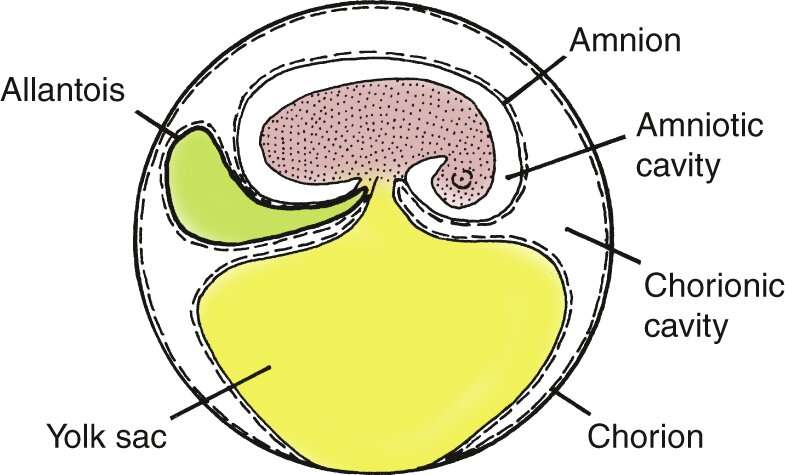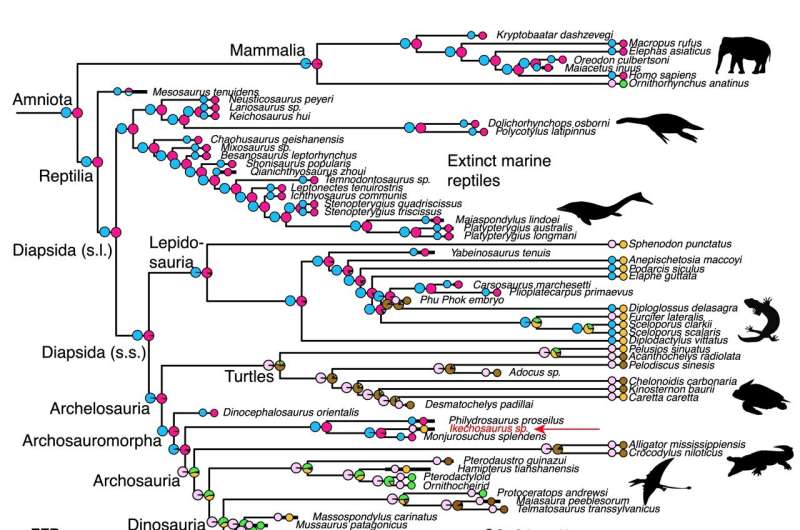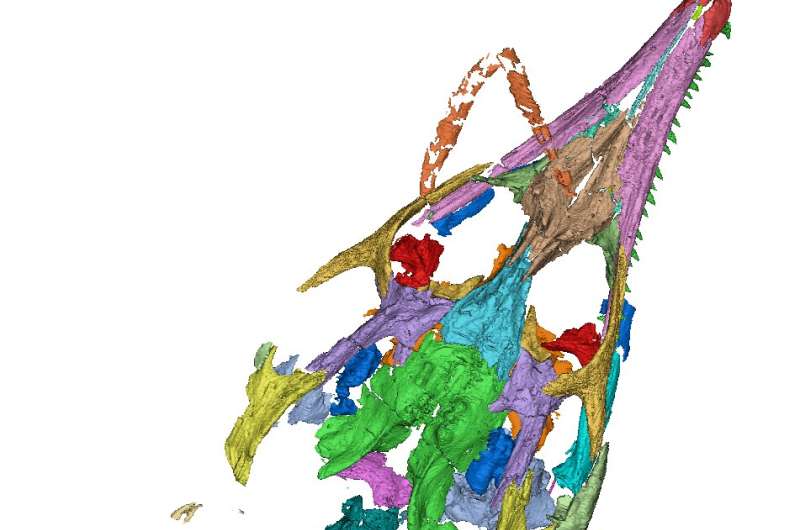This article has been reviewed according to Science X's editorial process and policies. Editors have highlighted the following attributes while ensuring the content's credibility:
fact-checked
peer-reviewed publication
trusted source
proofread
Which came first: The reptile or the egg?

The earliest reptiles, birds and mammals may have borne live young, researchers from Nanjing University and University of Bristol have revealed.
Until now, the hard-shelled egg was thought to be the key to the success of the amniotes—a group of vertebrates that undergo embryonic or fetal development within an amnion, a protective membrane inside the egg.
However, a fresh study of 51 fossil species and 29 living species which could be categorized as oviparous (laying hard or soft-shelled eggs) or viviparous (giving birth to live young) suggests otherwise.
The findings, published in Nature Ecology & Evolution, show that all the great evolutionary branches of Amniota, namely Mammalia, Lepidosauria (lizards and relatives), and Archosauria (dinosaurs, crocodilians, birds) reveal viviparity and extended embryo retention in their ancestors.
Extended embryo retention (EER) is when the young are retained by the mother for a varying amount of time, likely depending on when conditions are best for survival.
While the hard-shelled egg has often been seen as one of the greatest innovations in evolution, this research implies it was EER that gave this particular group of animals the ultimate protection.

Professor Michael Benton from the Bristol's School of Earth Sciences explained, "Before the amniotes, the first tetrapods to evolve limbs from fishy fins were broadly amphibious in habits. They had to live in or near water to feed and breed, as in modern amphibians such as frogs and salamanders."
"When the amniotes came on the scene 320 million years ago, they were able to break away from the water by evolving waterproof skin and other ways to control water loss. But the amniotic egg was the key. It was said to be a 'private pond' in which the developing reptile was protected from drying out in the warm climates and enabled the Amniota to move away from the waterside and dominate terrestrial ecosystems."
Project Leader Professor Baoyu Jiang added, "This standard view has been challenged. Biologists had noticed many lizards and snakes display flexible reproductive strategy across oviparity and viviparity."
"Sometimes, closely related species show both behaviors, and it turns out that live-bearing lizards can flip back to laying eggs much more easily than had been assumed."
"Also, when we look at fossils, we find that many of them were live-bearers, including the Mesozoic marine reptiles like ichthyosaurs and plesiosaurs," said Dr. Armin Elsler. "Other fossils, including a choristodere from the Cretaceous of China, described here, show the to-and-fro between oviparity and viviparity happened in other groups, not just in lizards."

Dr. Joseph Keating explained, "EER is widespread among vertebrates today, where the developing young are retained by the mother for a lesser or greater span of time."
"EER is common and variable in lizards and snakes today. Their young can be released, either inside an egg or as little wrigglers, at different developmental stages, and there appears to be ecological advantages of EER, perhaps allowing the mothers to release their young when temperatures are warm enough and food supplies are rich."
Professor Benton concluded, "Our work, and that of many others in recent years, has consigned the classic 'reptile egg' model of the textbooks to the wastebasket."
"The first amniotes had evolved extended embryo retention rather than a hard-shelled egg to protect the developing embryo for a lesser or greater amount of time inside the mother, so birth could be delayed until environments become favorable."
"Whether the first amniote babies were born in parchment eggs or as live, snapping little insect-eaters is unknown, but this adaptive parental protection gave them the advantage over spawning earlier tetrapods."
More information: Extended embryo retention and viviparity in the first amniotes, Nature Ecology & Evolution (2023). DOI: 10.1038/s41559-023-02074-0
Journal information: Nature Ecology & Evolution
Provided by University of Bristol





















